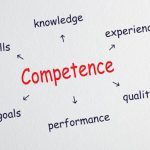- In the VET sector, assessment refers to the process of collecting evidence for making judgments about an individual’s competence or ability to perform a task or role against a standard expected in the workplace.
- This usually involves collecting evidence of performance and making comparisons to pre-determined standards.
- The purpose of assessment in the VET sector is to provide a way for students to demonstrate their skills and knowledge in relation to specific competencies.
- This allows students to show that they have the ability to perform tasks and meet standards required for particular occupations or roles.
The assessments are also used for:
- Determining how far along one is in the process of becoming competent.
- Meeting licensing and/or regulatory requirements and guidelines.
The assessments are also used for:
- Potential strengths and development areas
- Suitability for a particular role or task
- LLN needs
- Training gaps
- Recognise current existing competency of candidates
- Measure work performance
- Meet organisational requirements for work
As part of vocational education and training, assessment is the process of gathering evidence to make judgements about whether a learner has displayed the required skills, knowledge and attitudes to meet the standards for a particular qualification or training product. This evidence can come in many forms, including observation, tasks or projects completed, tests or written examinations. Once gathered, it is used to make a judgement about whether the learner has met the standards required. If they have, they will be awarded the training product. If not, they may be given feedback and guidance on how to improve.
Assessment is an important part of vocational education and training as it ensures that learners are receiving a quality education and that they are able to demonstrate the skills and knowledge required for their chosen field. The assessment provides a way for trainers/assessors to measure a learner’s progress and identify areas where they need more support. It can also be used to help learners understand their own strengths and weaknesses, and set goals for their future learning.
There are two main types of assessment: formative and summative.
Formative assessment is ongoing and happens throughout a course, while summative assessment usually takes place at the end of a course. Both types of assessment are important in vocational education and training. Formative assessment is used to help learners understand what they need to do to improve. It gives them feedback on their progress and allows them to make changes to their learning. Formative assessments are often given in small chunks as part of regular classwork.
The principles of formative assessment
- Assessment should be closely linked to learning objectives.
- Assessment tasks should be designed to allow learners to demonstrate their full range of knowledge, skills and abilities.
- Assessment tasks should be realistic and authentic, where possible.
- Feedback on performance should be timely, specific and constructive.
- Learners should be given opportunities to reflect on their own learning and assess their progress against agreed goals.
- Assessments should provide opportunities for collaboration and cooperation between learners.
- The use of technology can enhance the effectiveness of formative assessment by providing real-time feedback and enabling collaboration between learners in different locations.
- Assessments should be designed to promote lifelong learning skills such as self-awareness, problem-solving and reflection.
- The purpose and process of assessment should be made explicit to learners.
- Assessment practices should be regularly reviewed and revised in light of changing needs and developments in educational research.
Summative assessment is used to judge whether a learner has met the standards for a particular qualification. Summative assessments are usually more comprehensive than formative assessments, and they often include multiple assessments or tests over time.
The principles of summative assessment
- The summative assessment should focus on the individual’s needs and requirements and align with the learning outcomes.
- Summative assessment should be used to make decisions about learners’ competency.
- Summative assessment should meet principles of assessment and rules of evidence.
- Summative assessment should involve all stakeholders.
- Summative assessment should use a variety of assessment methods to gather evidence.
- Summative assessment should focus on the product rather than the process.
- Summative assessment should be conducted over a time period.
- Summative assessment should be transparent and understandable. The product should be a stand-alone product with all instructions included.
- Summative assessment should cover and assess students on all aspects of the training product.
- Summative assessment should be used to promote lifelong learning.
Both formative and summative assessments have their place in VET. Each has different purposes and uses different methods to gather evidence. By understanding the principles of each type of assessment, VET practitioners can choose the most appropriate assessment methods to meet the needs of their students, employers and the wider community.
As discussed both formative and summative assessments are important in vocational education and training. They both provide valuable information that can be used to improve the quality of education and training.
Both formative and summative assessment have their own advantages and disadvantages. Formative assessment is often seen as more beneficial to the student, as it can provide ongoing feedback and allow for modifications to the learning plan.
However, summative assessment can be more accurate in measuring achievement and may be necessary for making decisions about progression or certification. Ultimately, the decision of which type of assessment to use will depend on the specific needs of the learner and the goals of the vocational education and training program.











